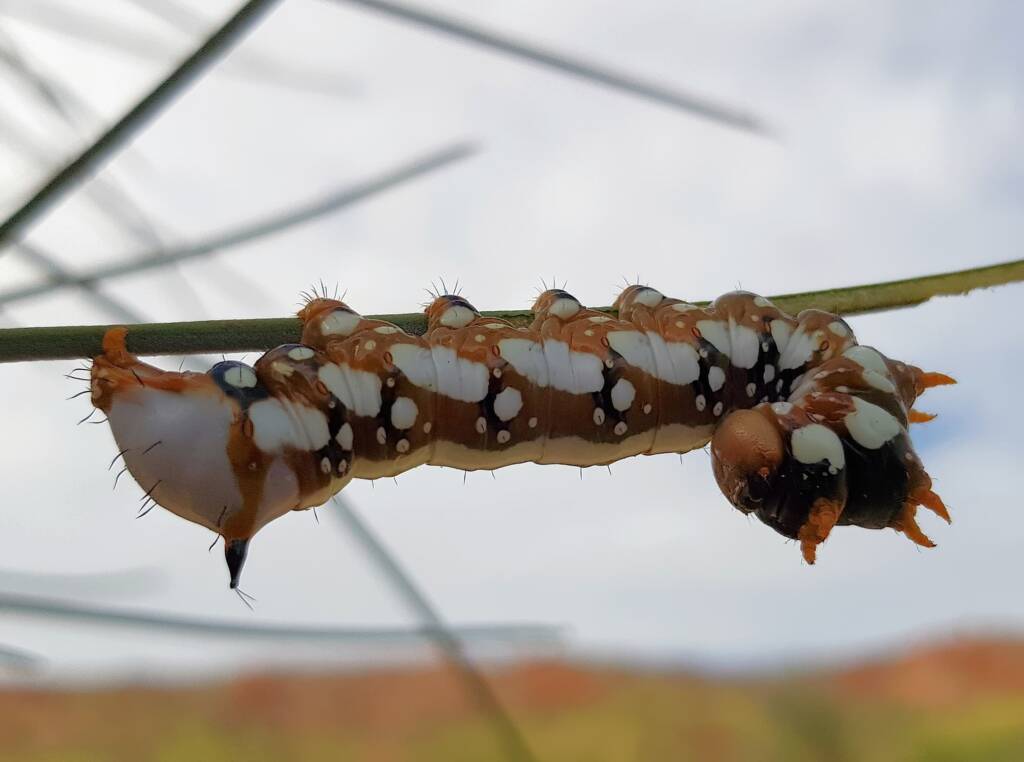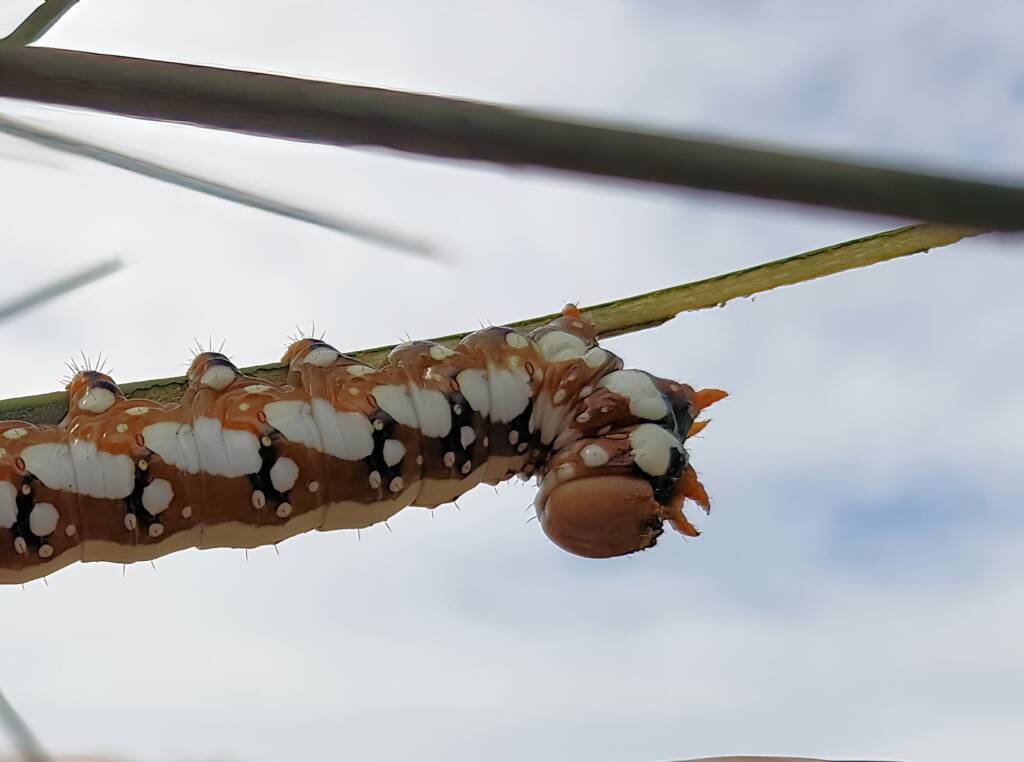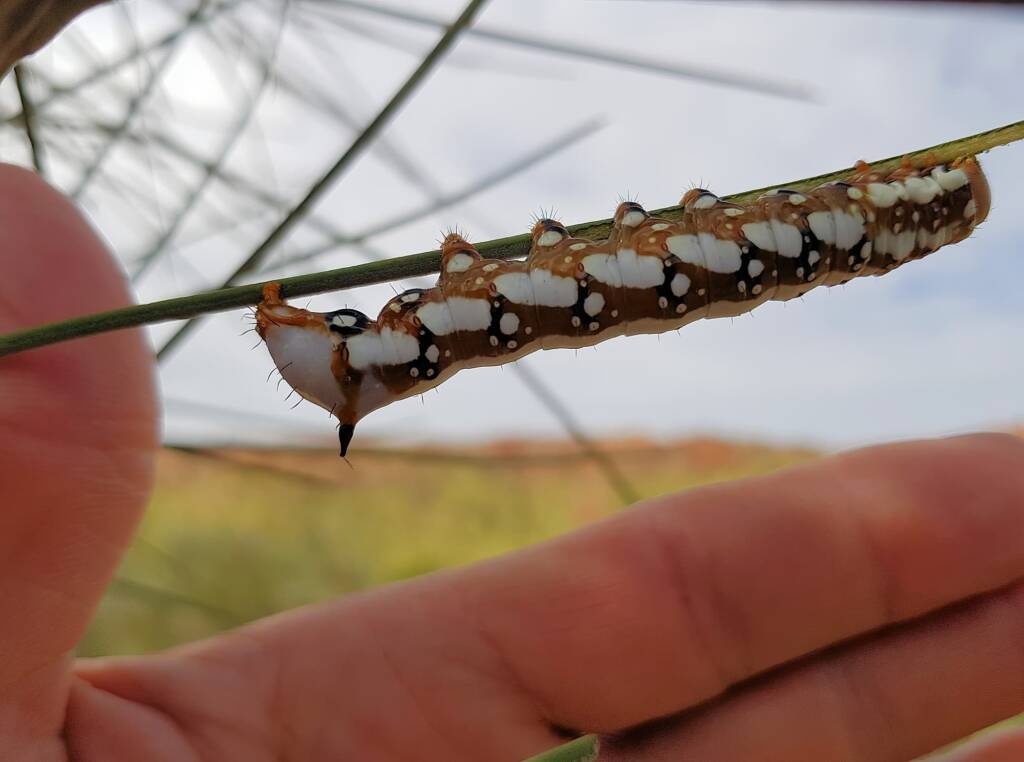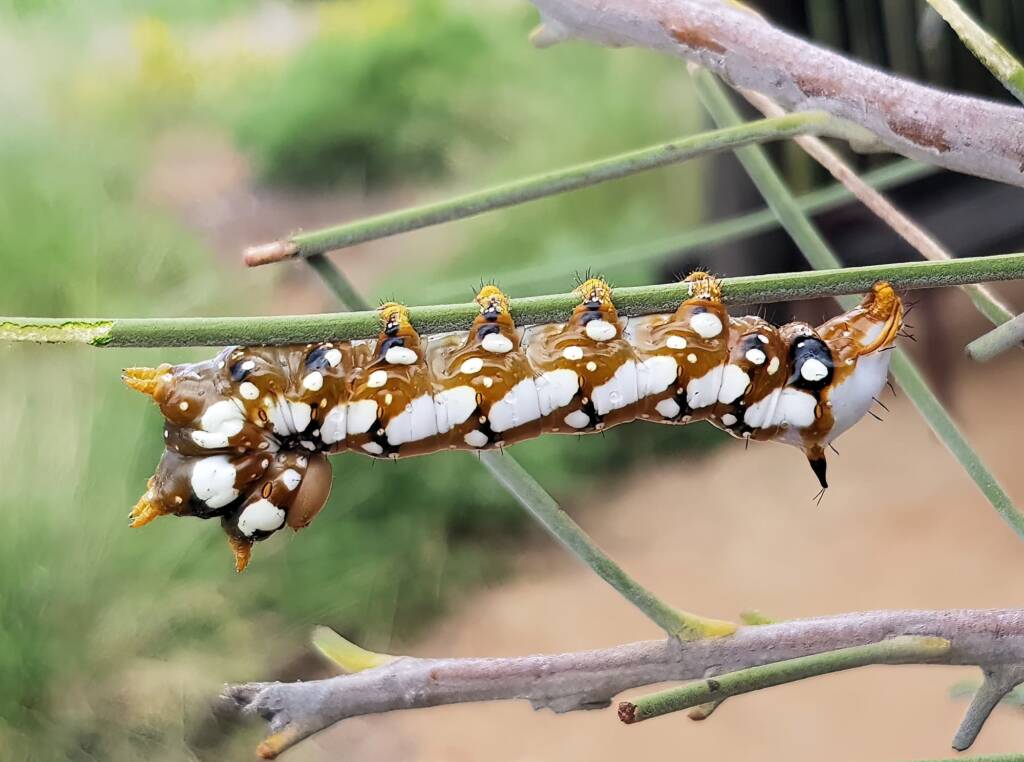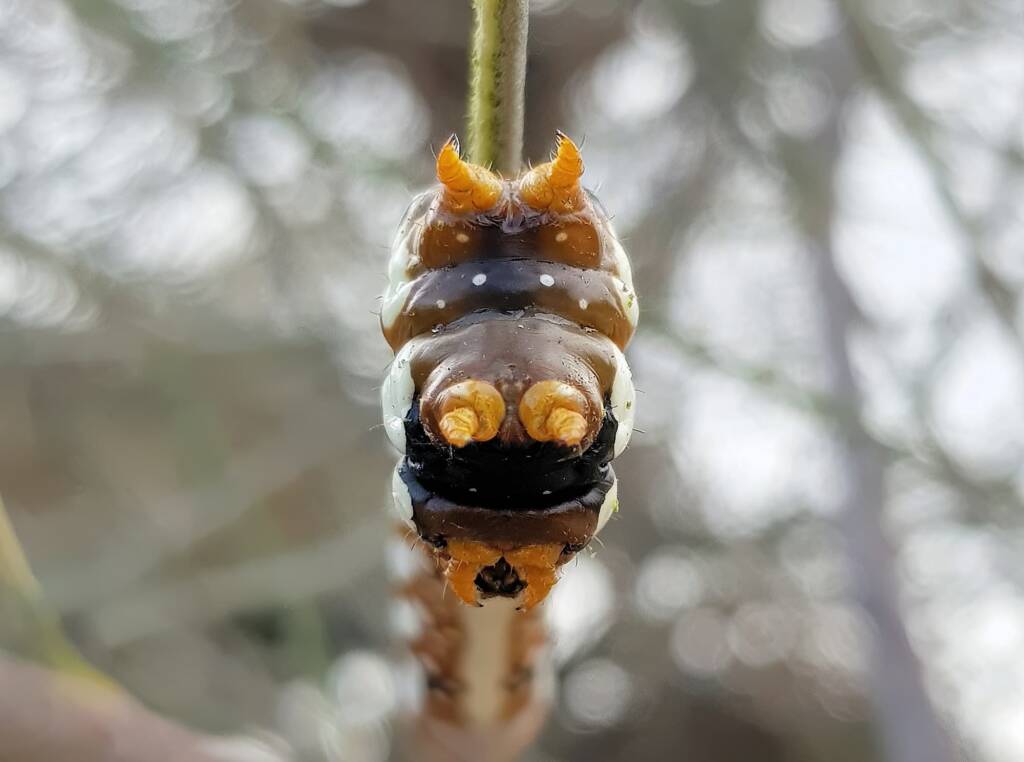Alice Springs Desert Park
ASDP InsectsAmegilla chlorocyanea Bee Banksia Moth – Caterpillar Bee Fly (Australiphthiria sp) Bee Fly (Ligyra cingulata) Braunsapis sp Bush Cockroach (Ellipsidion humarale) Caper White Butterfly Chequered Swallowtail (Papilio demoleus ssp sthenelus) Crusader Bug (Mictis profana) Day Flying Moth Exoneurella eremophila Bee Ground Shield Bug Heliotrope Moth (Utetheisa pulchelloides) Katydid (Taeniomenae) Lasioglossum (Chilalictus) Lasioglossum (Chilalictus) Mating Lasioglossum (Homalictus) Opisthopsis sp Potter Wasp Processionary Caterpillar Snout Beetle (Lixus) Torymus Chalcid Wasp Transverse Ladybird
Alice Springs Desert ParkFauna Flora Nature Theatre Nocturnal House
At certain times of the year, one of the insect species that is seen in the desert park and around Central, is the Australia Banksia Moth caterpillar (Psalidostetha banksiae).
A fairly large caterpillar, growing up to 6 cms long, this caterpillar is quite beautiful in appearance. The head capsule and body are a shade of brown to yellowish-brown (sometimes almost caramel in colour). The sides of the body have different size white patches and dots along the length, and a white patch at the other end. There is a white line along the top length of the body.
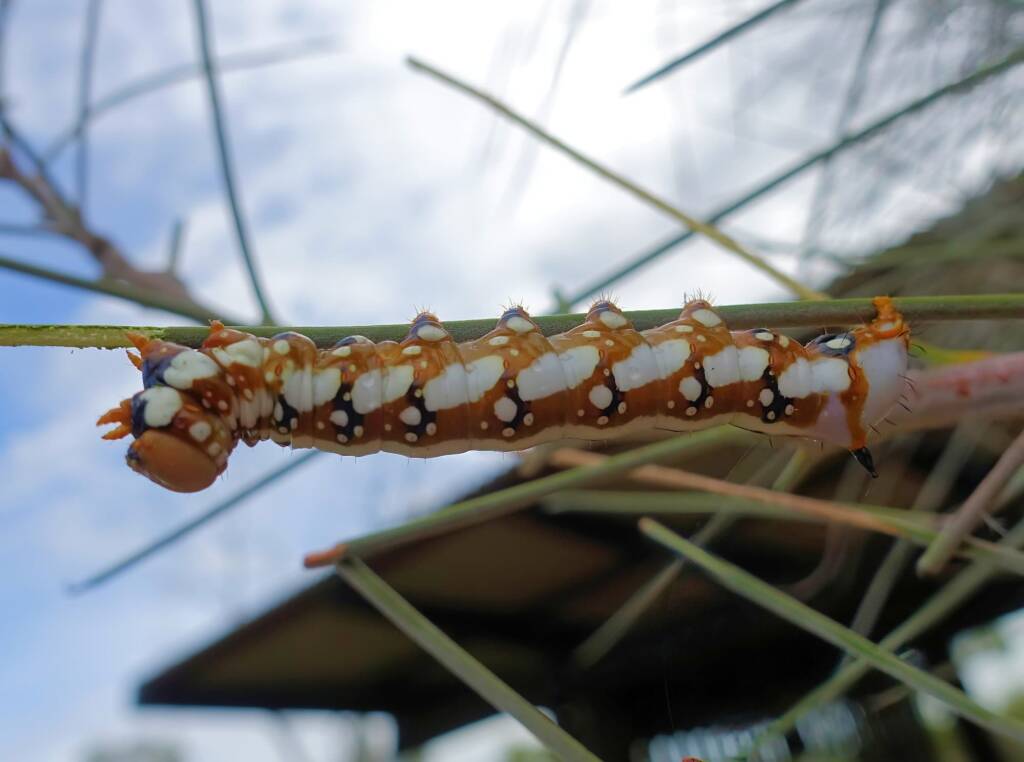
There is colour variation through the different instars, in particular the early instars are more yellow then white. The early instars appear to have large heads, and sparse thick black hairs, losing many of the thick hairs in subsequent instars lose. The caterpillar grows to a length of 6 cms.
The larvae are found feeding on the leaves of Banksia, Grevillea, Hakea and Dryandra. Pictured here, the caterpillar is feeding on the Long Leaved Corkwood (Hakea lorea).

The caterpillar have the habit of curling back the head end when disturbed (possibly a defence posture). The head and thorax are raised so that the “true legs” (caterpillars have 3 pairs of “true legs” that are attached to the thorax) are pointed forwards.
The other legs are known as “prolegs”. The Psalidostetha banksiae have 5 pairs of prolegs, that are used for walking and clinging. The last pair of prolegs (on the abdominal segment) are known as “claspers”.
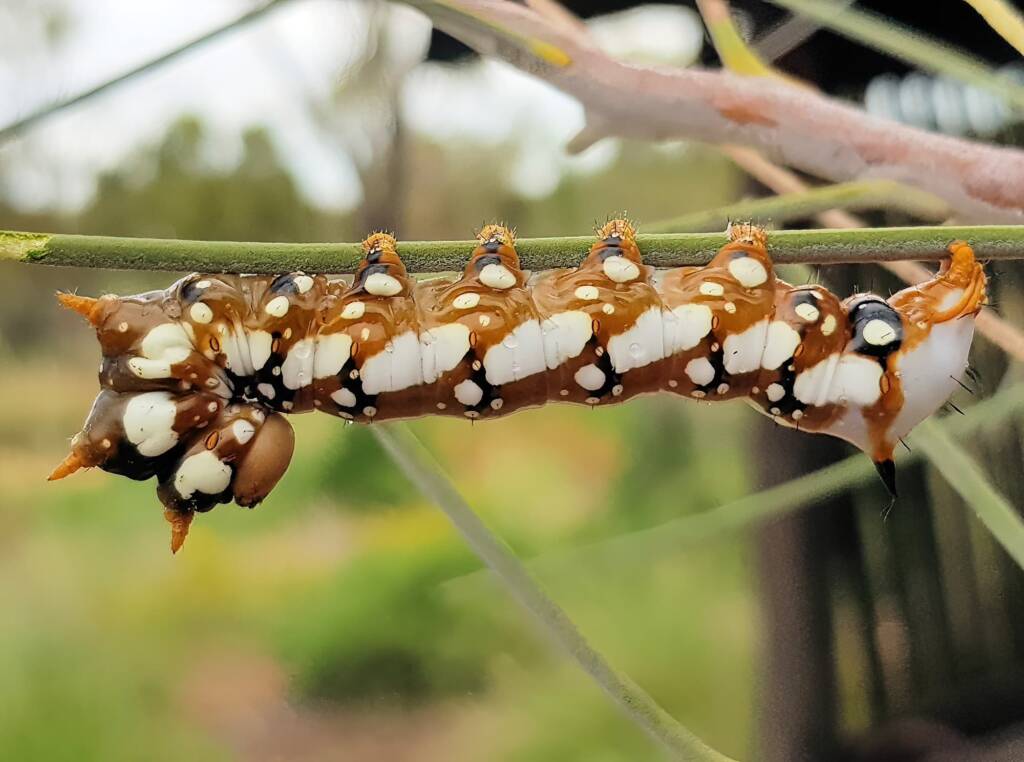

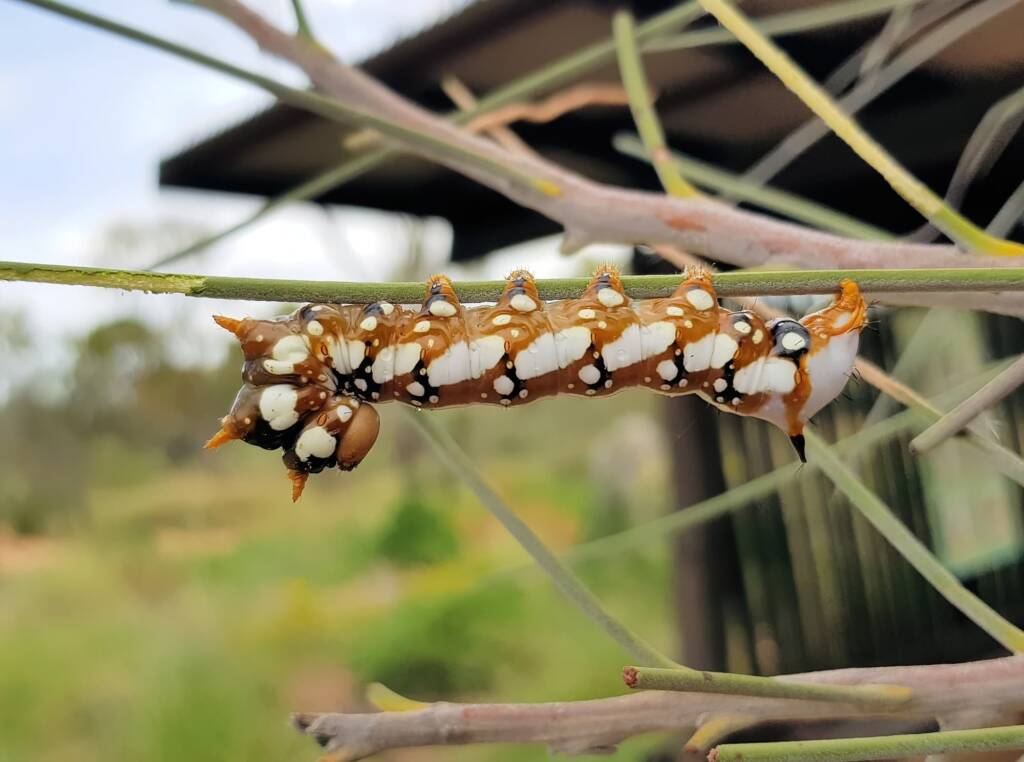
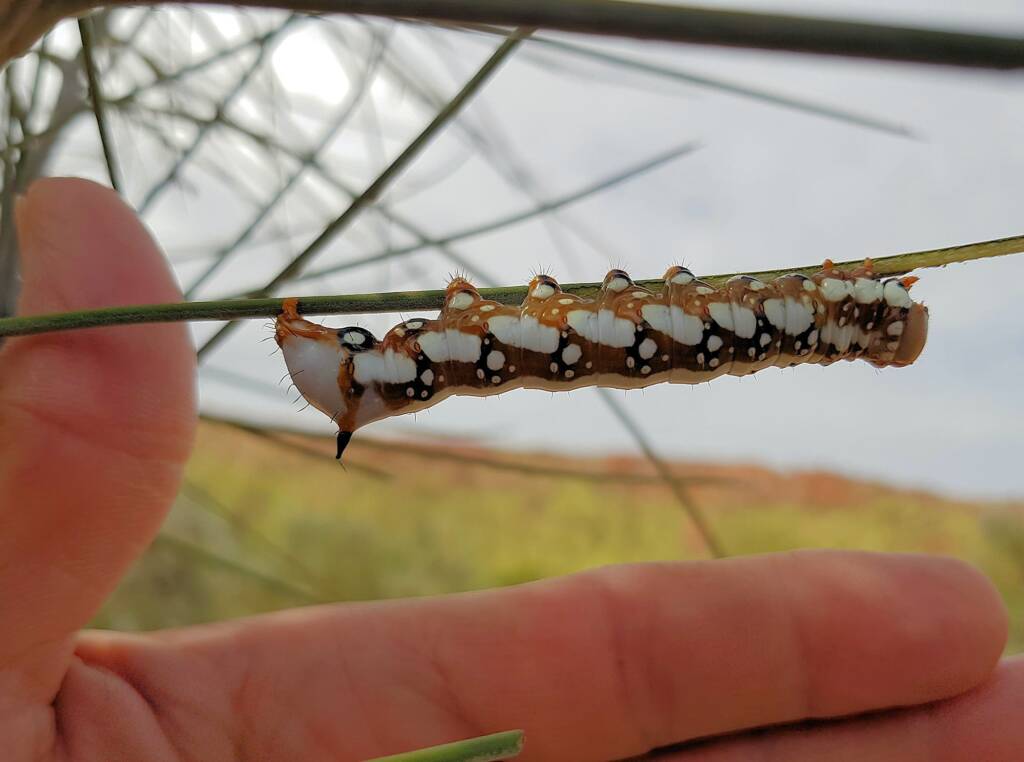
- Scientific classification
- Kingdom: Animalia
- Phylum: Arthropoda
- Subphylum: Hexapoda
- Class: Insecta
- Informal: Pterygotes
- Order: Lepidoptera
- Unranked: Ditrysia
- Superfamily: Noctuoidea
- Family: Notodontidae
- Subfamily: Notodontinae
- Genus: Psalidostetha
- Species: Psalidostetha banksiae
Footnote & References
- Psalidostetha banksiae, iNaturalist, https://www.inaturalist.org/taxa/859879-Psalidostetha-banksiae
- Psalidostetha banksiae (Lewin, 1805), Atlas of Living Australia, https://bie.ala.org.au/species/https://biodiversity.org.au/afd/taxa/6c6df706-601f-4649-a989-5887a76c22db
- Psalidostetha banksiae (Lewin, 1805), Banksia Moth, Coffs Harbour Butterfly House, http://lepidoptera.butterflyhouse.com.au/noto/banksiae.html
- Banksia moth, Psalidostetha banksiae (Danima banksia), Agrobase, https://agrobaseapp.com/australia/pest/banksia-moth
ASDP InsectsAmegilla chlorocyanea Bee Banksia Moth – Caterpillar Bee Fly (Australiphthiria sp) Bee Fly (Ligyra cingulata) Braunsapis sp Bush Cockroach (Ellipsidion humarale) Caper White Butterfly Chequered Swallowtail (Papilio demoleus ssp sthenelus) Crusader Bug (Mictis profana) Day Flying Moth Exoneurella eremophila Bee Ground Shield Bug Heliotrope Moth (Utetheisa pulchelloides) Katydid (Taeniomenae) Lasioglossum (Chilalictus) Lasioglossum (Chilalictus) Mating Lasioglossum (Homalictus) Opisthopsis sp Potter Wasp Processionary Caterpillar Snout Beetle (Lixus) Torymus Chalcid Wasp Transverse Ladybird
ASDP FaunaASDP Arachnida ASDP Birds ASDP Insects ASDP Reptiles Dingo Ghost Bat Greater Bilby Numbat Red Kangaroo Short-beaked Echidna Spinifex Hopping Mouse Thorny Devil Western Quoll
Alice Springs Desert ParkFauna Flora Nature Theatre Nocturnal House

